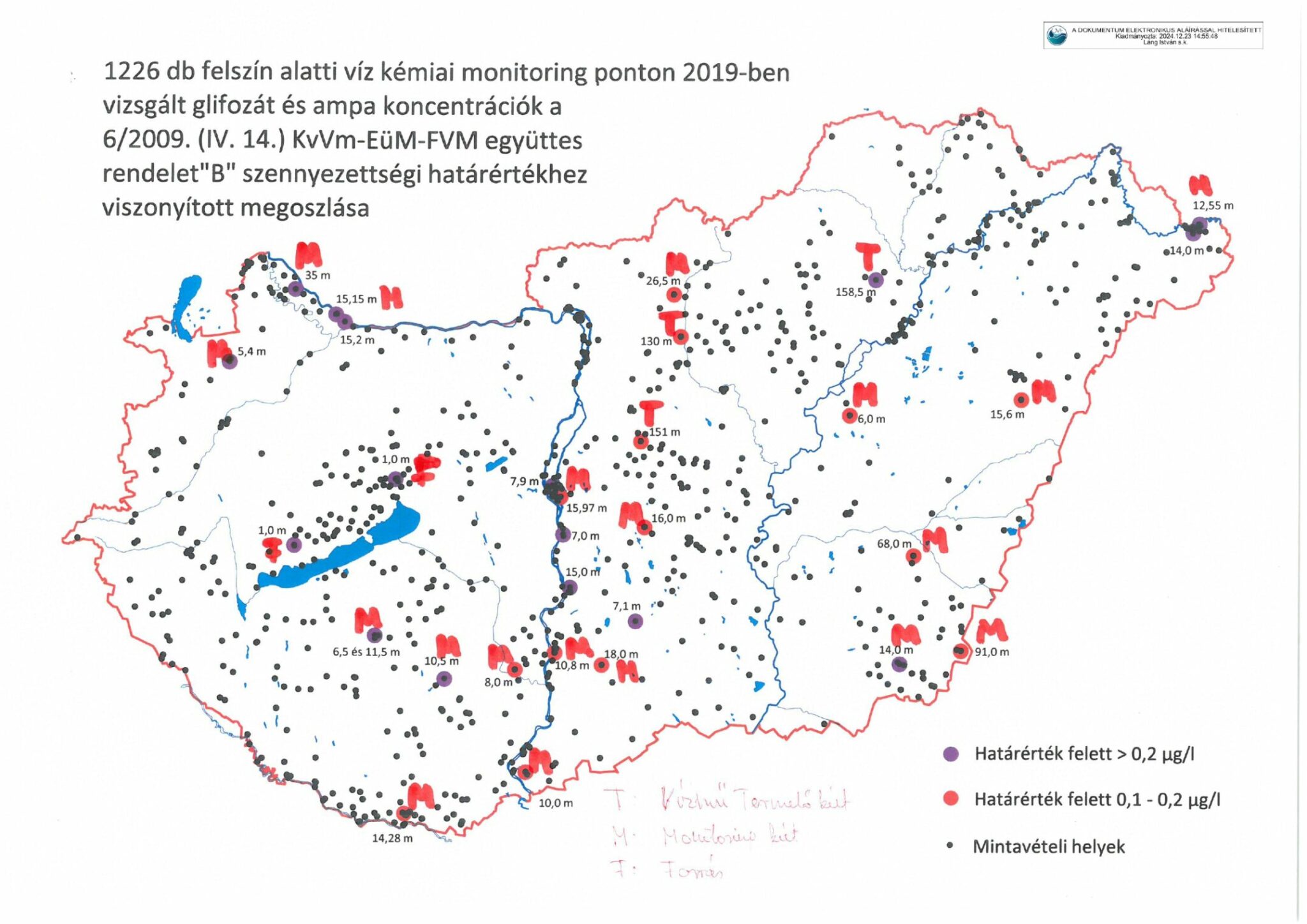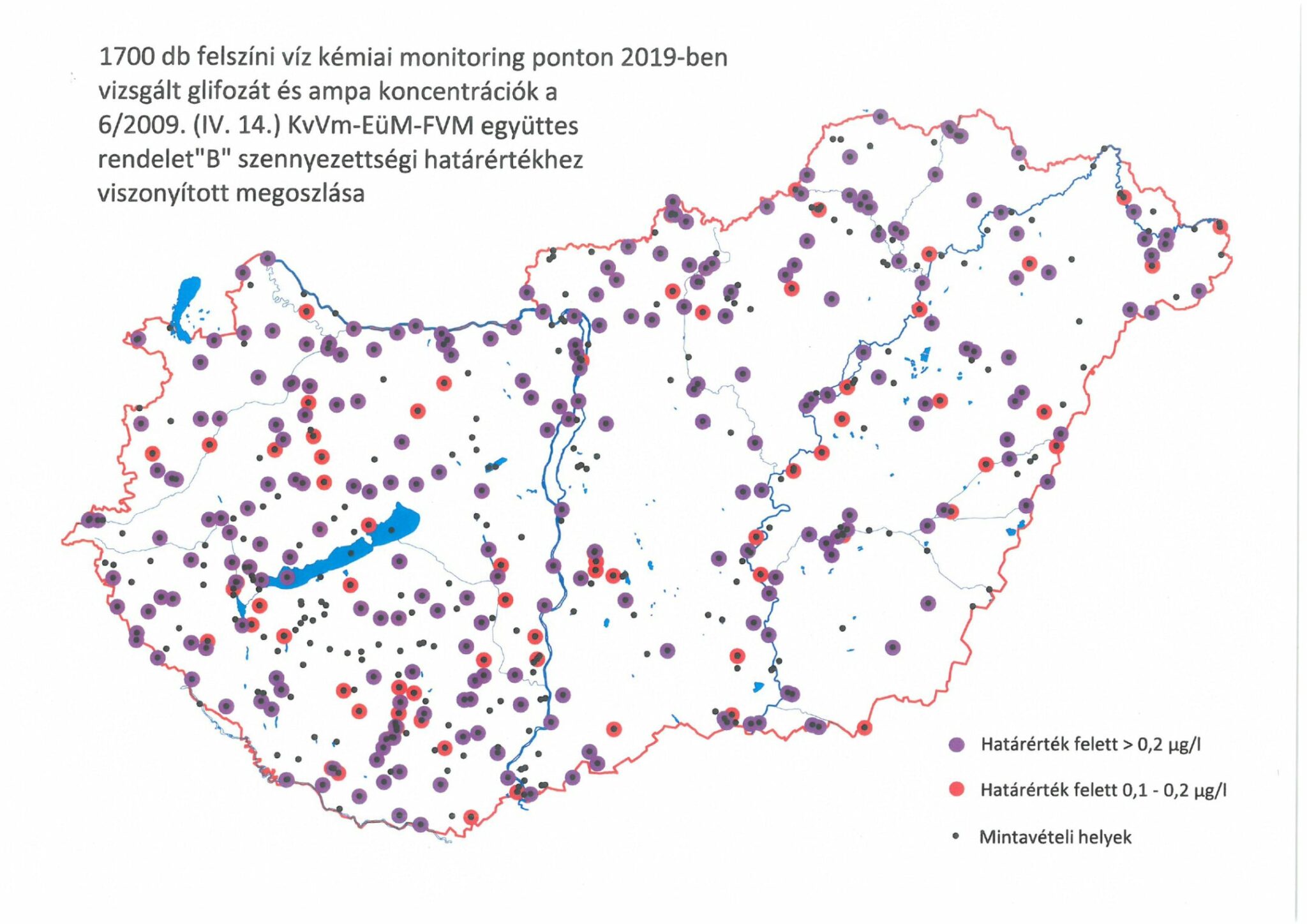The https://english.atlatszo.hu use cookies to track and profile customers such as action tags and pixel tracking on our website to assist our marketing. On our website we use technical, analytical, marketing and preference cookies. These are necessary for our site to work properly and to give us inforamation about how our site is used. See Cookies Policy
Glyphosate contamination found in Hungarian waters – here is the hidden study
Glyphosate has been detected in lakes, rivers and groundwater in Hungary, according to an unpublished report obtained by Átlátszó. Glyphosate is the most widely used agricultural pesticide worldwide as well as in Hungary. The chemical’s toxicity to aquatic life is well-established, and mounting evidence for potential carcinogenic, mutagenic, and endocrine-disrupting effects in humans.
The presence of glyphosate in Hungary’s waters has been known by authorities for five years, but the report has not previously been made public. Átlátszó requested and received the results of the national research through a freedom of information request. Once it contaminates rivers, lakes, or groundwater, the chemical can enter the human body through the consumption of drinking water and crops. Glyphosate has already been detected in urine samples from 99.8% of the French population, and research in other countries have shown similar results.

Glyphosate-based products are widely used to eliminate weeds in home gardens, large-scale agriculture, and along roadsides and railway lines. Due to its high water solubility, glyphosate penetrates soil, surface water, and groundwater through rain and irrigation. Residues can then make their way into food and drinking water.
The General Directorate of Water Management of Hungary assessed glyphosate contamination of Hungarian waters in 2019. The researchers took a total of 1,700 samples of surface water and 1,200 samples of groundwater across the country. The results showed that 14 percent of the groundwater samples contained glyphosate and its degradation product (aminomethylphosphoric acid, AMPA). 2.5 percent of the samples contained concentrations of the herbicide above the threshold.

Source: Glyphosate, AMPA, Tritium National Survey 2019, Technical Report and Evaluation – Executive Summary, General Directorate of Water Management.
Positive samples were detected across the entire country, with the highest concentrations found in regions of intensive agricultural activity. However, concentrations more than double the legal threshold were also recorded outside farming zones, including in spring waters near Lake Balaton.
Researchers described it as a ‘shocking finding’ that glyphosate was also present—well above the permissible limit—in deep wells (130 to 160 metres) operated by public water utilities.
For soil and groundwater, there is currently no specific limit value for glyphosate in Hungary or in the EU; an EU proposal is currently under preparation. Therefore, the researchers used the limit value for pesticides in general, as set by the law . The limit does not refer to human health; it defines the concentration at which groundwater is classified as contaminated, considering the protection of aquatic ecosystems and the groundwater’s suitability for drinking water production.
Glyphosate contamination in surface waters
During the National Water Directorate’s research, glyphosate and AMPA were detected in three quarters of the samples taken from lakes and rivers. Concentrations above the limit values were found in nearly half of the water samples.

Source: Glyphosate, AMPA, Tritium National Survey 2019, Technical Report and Evaluation – Executive Summary, General Directorate of Water Management.
The study also revealed that, contrary to existing literature, glyphosate did not fully degrade within a year in areas of intensive agriculture. As a result, it can leach into groundwater and the first aquifer. The rate of glyphosate degradation depends on factors such as soil composition and the presence of biotic communities, leading to variations between different regions.
The National Food Chain Safety Office requires a minimum safety distance of 50 metres between rivers and lakes and the use of glyphosate-based herbicides. Regional government offices are authorized to control this, it is, however, questionable how often they do it.
Glifozat Szakmai Jelentes B&W2 by atlatszo
Toxic to aquatic organisms
The effects of glyphosate on human health have been subject to considerable professional and social debate for many years, but its harmful effects on the aquatic environment are well established. Therefore, glyphosate-based products should be labelled with the warning “Toxic to aquatic life with long-lasting effects”.
Adverse effects have also been shown in a number of aquatic organisms: various algae species, molluscs (snails, mussels), crustaceans, amphibians, reptiles and fish. These include developmental defects, metabolic and hormonal disturbances, reduced fertility, and in some cases cellular or DNA damage or increased mortality. Toxic effects vary considerably between species and depend largely on the extent and duration of contamination.
The presence of glyphosate in waters is a global phenomenon. According to a scientific publication, a survey found glyphosate and AMPA in 59% of surface water samples and 8.5% of groundwater samples in the USA. In Rio de Janeiro and its surroundings, more than 40 percent of surface water samples contained glyphosate, and in the Netherlands, a study in 2020 found glyphosate in 90 percent of surface waters.
In response to Átlátszó’s question, the General Directorate of Water Management replied that “since the research, the planning of the next national survey has started and glyphosate and AMPA have been included in the programme”. In addition, they said that as a result of their discussions, glyphosate and AMPA have been included in the list of pesticides to be tested in drinking water, carried out by the National Public Health Service every year.
We also asked the National Food Chain Safety Office whether they had received the report. The Office replied that “the National Food Chain Safety Office has no information” on the document.
Written and translated by Orsolya Fülöp, the Hungarian version of this story is here. Cover photo: The National News Agency. Supported by Journalismfund Europe.


